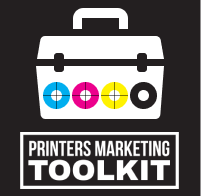In today’s competitive business landscape, a robust marketing plan is essential for the success of any printing business. A well-crafted Printing Business Marketing Plan serves as a roadmap to attract clients, build brand awareness, and achieve sustainable growth. In this guide, we’ll delve into each aspect of creating an effective marketing plan tailored specifically for printing businesses.
Understanding Your Target Audience for Printing Services:
Before diving into any marketing efforts, it is crucial to understand your target audience. This will help you tailor your marketing messages and strategies to resonate with your potential customers. To identify your target audience, start by analyzing your existing customer base. Look for common demographics, interests, and needs among your customers. You can also conduct surveys or interviews to gather more information about their preferences and pain points.
Once you have a clear understanding of your target audience, you can create buyer personas. These personas represent your ideal customers and will serve as a guide when developing your marketing strategies. By knowing who your customers are and what they want, you can effectively communicate the value of your printing services to them.
Conducting Market Research for Your Printing Business:
| S. No | Heading | Description |
|---|---|---|
| 1 | Define Research Objectives: | Clearly outline the goals and objectives of your market research, such as understanding customer preferences, assessing market demand, or identifying growth opportunities. |
| 2 | Segment Your Market: | Divide your target market into distinct segments based on demographics, psychographics, and behavior to better understand their unique needs and preferences. |
| 3 | Analyze Industry Trends: | Stay informed about the latest trends and developments in the printing industry, including technological advancements, emerging printing techniques, and shifts in consumer behavior. |
| 4 | Study Competitor Strategies: | Analyze the strategies and tactics employed by your competitors in the printing industry to identify strengths, weaknesses, and areas for differentiation. |
| 5 | Conduct SWOT Analysis: | Evaluate your printing business's strengths, weaknesses, opportunities, and threats to gain a comprehensive understanding of your competitive position and market potential. |
| 6 | Gather Customer Feedback: | Solicit feedback from existing customers through surveys, interviews, or focus groups to gain insights into their needs, preferences, and satisfaction levels. |
| 7 | Assess Market Demand: | Determine the demand for various printing services within your target market by analyzing industry reports, conducting market surveys, and studying consumption patterns. |
| 8 | Explore Niche Markets: | Identify niche markets or specialized printing services with high demand and low competition to capitalize on untapped opportunities and differentiate your printing business. |
| 9 | Monitor Economic Indicators: | Keep track of economic indicators such as GDP growth, consumer spending, and business sentiment to gauge the overall health of the printing industry and identify potential market challenges or opportunities. |
| 10 | Stay Agile and Responsive: | Continuously monitor market trends, consumer preferences, and competitive dynamics to adapt your strategies and offerings accordingly, ensuring your printing business remains competitive and relevant in a rapidly evolving landscape. |
Setting Marketing Goals and Objectives for Your Printing Business:
Setting clear and achievable marketing goals and objectives is fundamental to the success of your printing business. By defining these goals, you provide your team with a roadmap for success and ensure that your marketing efforts are focused and effective.
1. Define Specific Goals:
Rather than vague aspirations, your marketing goals should be specific, measurable, attainable, relevant, and time-bound (SMART). For example, instead of saying “increase sales,” specify by how much and within what timeframe. This clarity helps in tracking progress and staying motivated.
2. Align with Business Objectives:
Your marketing goals should align closely with your overall business objectives. Whether it’s expanding market reach, launching new products/services, or enhancing brand awareness, ensure that your marketing efforts support the broader goals of your printing business.
3. Prioritize and Focus:
While it’s tempting to pursue multiple objectives simultaneously, it’s essential to prioritize and focus on a few key goals at a time. This prevents dilution of resources and allows for more concentrated efforts, increasing the likelihood of success. Start with the most critical goals that will have the greatest impact on your printing business’s growth and profitability.
Developing a Branding Strategy for Your Printing Business:
Developing a strong branding strategy is paramount for any printing business aiming to stand out in a competitive market. It’s more than just creating a logo; it’s about crafting a distinct identity that resonates with your target audience and sets you apart from the competition.
A branding strategy encompasses everything from your company’s mission and values to its visual identity and communication style. It’s about creating a cohesive brand experience that leaves a lasting impression on customers and fosters loyalty.
Here are three key aspects to consider when developing your branding strategy:
1. Define Your Brand Personality:
Your brand personality is the human traits and characteristics attributed to your brand. Are you a reliable and professional printing service, or do you want to convey a more creative and innovative image? Define your brand’s personality traits and ensure that they align with the values and aspirations of your target audience.
2. Establish Consistent Visual Identity:
Consistency is key when it comes to building brand recognition and trust. Develop a cohesive visual identity that reflects your brand’s personality and resonates with your target audience. This includes elements such as your logo, color palette, typography, and imagery. Ensure that these elements are consistently applied across all your marketing materials, from business cards to social media posts.
3. Communicate Your Unique Value Proposition:
What sets your printing business apart from the competition? Whether it’s exceptional quality, quick turnaround times, or personalized customer service, clearly communicate your unique value proposition to your target audience. Highlight what makes your printing services special and why customers should choose you over alternatives. This will help you carve out a distinct position in the market and attract loyal customers who resonate with your brand.
Choosing the Right Marketing Channels for a Printing Business:
Choosing the right marketing channels for a printing business is crucial for effective audience reach and maximizing ROI. Here’s a brief breakdown:
- Audience Understanding: Identify where your audience spends time - online, offline, or both. Tailor channels accordingly to ensure maximum visibility and engagement.
- Online Platforms: Leverage your website as a central hub for information and services. Use social media platforms such as Instagram and LinkedIn to showcase your work, share industry insights, and engage with potential clients. Implement email marketing to nurture leads and maintain client relationships.
- Print Advertising: Despite the digital age, print media remains a powerful tool for reaching local audiences and targeting specific demographics. Explore opportunities in newspapers, magazines, direct mail, and flyers to create tangible connections with potential clients.
- Networking: Build relationships within the printing industry and collaborate with complementary businesses such as graphic designers, marketing agencies, and event planners. Attend industry events, join professional associations, and participate in networking opportunities to expand your reach and gain referrals.
- Measurement: Implement tracking tools and analytics to monitor the performance of your marketing channels. Track key metrics such as website traffic, social media engagement, lead generation, and conversion rates. Use data insights to refine your strategies and allocate resources effectively.
Creating a Marketing Budget for a Printing Business:
Allocating a marketing budget is a crucial step in ensuring the success of your printing business marketing plan. Your budget should be realistic, reflecting both your financial constraints and your marketing objectives. It’s essential to prioritize your spending, focusing on the channels and tactics that are most likely to drive results. Keep in mind that marketing is an investment, not an expense. A well-planned budget allows you to allocate resources efficiently, maximizing return on investment (ROI) and driving sustainable growth for your business.
Developing a Marketing Plan for a Printing Business:
Crafting a comprehensive marketing plan lays the groundwork for success in the competitive printing industry. By outlining your strategies and tactics, you can ensure a focused approach to reaching your target audience and driving business growth.
1.Start by clearly defining your marketing objectives. Whether it’s increasing brand awareness, generating leads, or boosting sales, establish specific, measurable goals that align with your overall business objectives.
2. Conduct thorough market research to understand your target audience’s needs, preferences, and purchasing behavior. Identify your ideal clients and tailor your marketing efforts to address their pain points and provide solutions.
3. Based on your objectives and audience insights, determine the most effective marketing strategies and tactics for your printing business. Consider a mix of online and offline channels, such as website optimization, social media marketing, email campaigns, print advertising, and networking events.
4. Allocate resources wisely by creating a realistic marketing budget. Determine how much you can afford to spend on each marketing initiative and prioritize activities that offer the highest potential return on investment (ROI).
5. Outline a timeline for implementing your marketing plan, including specific milestones and deadlines for each activity. Assign responsibilities to team members and establish accountability to ensure timely execution. Be prepared to adapt your plan as needed based on market feedback and performance metrics.
Also Read : Tips for Crafting an Effective Marketing Strategy in the Printing Industry
Evaluating and Adjusting the Marketing Plan for a Printing Business:
The final step in crafting an effective printing business marketing plan is to evaluate its performance and make necessary adjustments. This process involves analyzing the outcomes of your marketing activities against your set goals and objectives. By identifying areas of success and areas for improvement, you can refine your strategy, making it more effective over time. Continual adaptation is key to staying competitive and achieving long-term success in the dynamic printing industry.
Conclusion: The Importance of a Well-Crafted Marketing Plan for a Printing Business
In the dynamic world of printing businesses, a well-crafted marketing plan serves as a roadmap to success. By understanding your audience, conducting thorough research, and implementing targeted strategies, you can elevate your brand and drive business growth. Remember, consistency, creativity, and adaptability are the pillars of effective marketing. With a strategic approach and a commitment to excellence, your printing business can thrive in today’s competitive marketplace.
For more insights and resources on crafting an effective marketing plan for your printing business, visit Printers Marketing Toolkit at printersmarketingtoolkit.com or contact us at info@printersmarketingtoolkit.com. You can also reach us at (208) 274-7282.





